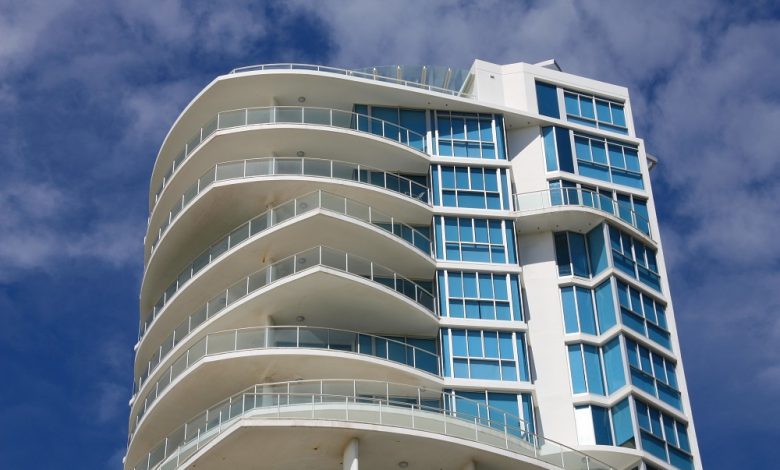
Balconies and balustrades need constant love
500 years on, the Capulets trend setting house feature proves ever popular
Balconies have featured in some of the greatest love stories of all time and none more celebrated than when Shakespeare’s Juliet climbed upon the railing outside her window to ask, “O Romeo, Romeo, wherefore art thou Romeo?”
But balconies and balustrades can also be dangerous.
In the 11 years from 2002 to 2012, there were 936 presentations to emergency departments in Queensland resulting from falls from a balcony, and in June 2010, following the collapse of a pre-1940s deck, the Brisbane Coroner recommended occupiers of all residential dwellings that include a timber deck or balcony have them checked for structural integrity.
Balconies and balustrades have been decorative features in accommodation properties for hundreds of years, popularised in the 1600s by the grand homes of Venice.
But with their decorative qualities comes great responsibility.
Unlike most other structures in a property, balconies are constantly exposed to the elements, and the integrity of the structure is always at risk. This makes regular checks and maintenance crucial.
Over time, the external façade of a building can become dated and unattractive, and a facelift may be required. When planning an external refresh, it is a good idea to also make any remedial repairs to your balcony before you start or to integrate those repairs within the overall project.
Older properties may need restoration work to return the building as close as possible to their original condition. This may require repairs without modernising the building’s appearance – especially heritage buildings. This work can be painstaking and although modern materials and techniques may be used, the desired result is usually for the appearance of the building to remain as close to the original as possible.

Some common causes of deterioration of balconies in both old and newer properties can include tile movement and breakage, porous grout or deteriorated grout. Waterproof membrane failure is often caused by the use of inferior products or the corrosive effects of time and pooling rainwater.
Strict rules cover balconies and balustrades in Australia.
Queensland law, for instance, says where a deck or balcony is one metre or higher above the ground, a balustrade – a guard or barrier that is commonly made of metal or timber bars – needs to be at least one metre high. Glass panels are also often used.
The Australian climate batters balconies and balustrades, and they can quickly become damaged and unsafe. Older balconies can also contain hazardous asbestos.
The Queensland Government’s Department of Communities, Housing and Digital Economy says it is vital to undertake routine maintenance.
Termites can be lethal in timber balconies and the department says all timber construction should have a termite management system.
Wood rot occurs due to high levels of moisture, often when two pieces of timber are in contact, trapping water.
Timbers exposed to the weather should be properly painted to repel water and moisture. Any areas of a balcony that are often damp should be checked immediately.
Dampness can occur when pot plants without bottom plates or feet are placed on the deck or balcony. Soil and other debris should also be cleared from balconies, bearers, joists, posts or supports. If decay occurs in structural timbers the government department urges that expert advice be immediately sought to establish the implications for the structural integrity of the deck or balcony.
Balustrades must have enough strength to resist forces or pressure, including strong winds, or people leaning against them.

The Queensland Building and Construction Commission along with other state-based building regulators, warn anyone undertaking balcony renovations to make sure their balustrades and railings measure up.
Water ingress to the fabric of a building is a common issue of concern. Water can penetrate from a variety of sources, including rain or rising damp, possibly resulting from the failure of roof membranes, cavity flashings, joint sealants, damp courses or incorrect falls in roofs or external floor areas. Balcony waterproofing is a common failure and to fix, waterproofing may need to be undertaken anywhere around the balcony – the roof, wall tiling, concrete floor, planter boxes, and windows or doors.
Failure in the waterproofing membrane is the most common cause of balcony leaks, while the most common underlying cause is a lack of proper grout and sealer maintenance. Any leaks, if not repaired, can cause bigger leaks, resulting in significant damage and costly repairs.
The best way to stop the waterproof membrane from failing is to have professional experts regularly check and repair any damage to the grout and sealer. The best advice is to seek an industry specialist that brings decades of knowledge, experience and remedial solution building skills to properties.
An accomplished engineer and tradesperson should be able to get to the heart of your balcony’s problems and find a solution that works well for the long term.
Applying protective coatings such as epoxy and membranes is extremely important for safeguarding building structures, increasing their effective-life and reducing maintenance costs. Protective coatings can be applied to steel and other metals, brickwork, concrete and timber, and will help shield them from the harsh erosion causing effects of the elements.

AccomNews is not affiliated with any government agency, body or political party. We are an independently owned, family-operated magazine.







